This super-easy turkey brine (no boiling required!) also delivers the most flavor using a flavor-bomb slurry of onion, garlic, and herbs.
If you’re like me, when you read turkey brine recipes, you start to feel some dread. They often involve you boiling a large quantity of water with aromatics so that the water can get flavored. Then you dissolve the salt into there, and then you need to fully chill it so that it is safe to use with the turkey. All of that before the brining even starts!
- Video: How To Make The Best Turkey Brine
- What Is A Brine?
- Why Should I Brine My Thanksgiving Turkey?
- How Long To Brine A Whole Turkey
- Why Is This The Best Turkey Brine?
- How To Make Your Turkey Brine Slurry
- Using This Brine For Smaller Quantities
- How To Brine A Whole Turkey
- Making Gravy From Brined Turkey Drippings
- Easier Turkey Brine Options: Dry Brining and Turkey Pieces
- Podcast Episode About This Turkey Brine Recipe
- The BEST Turkey Brine Recipe
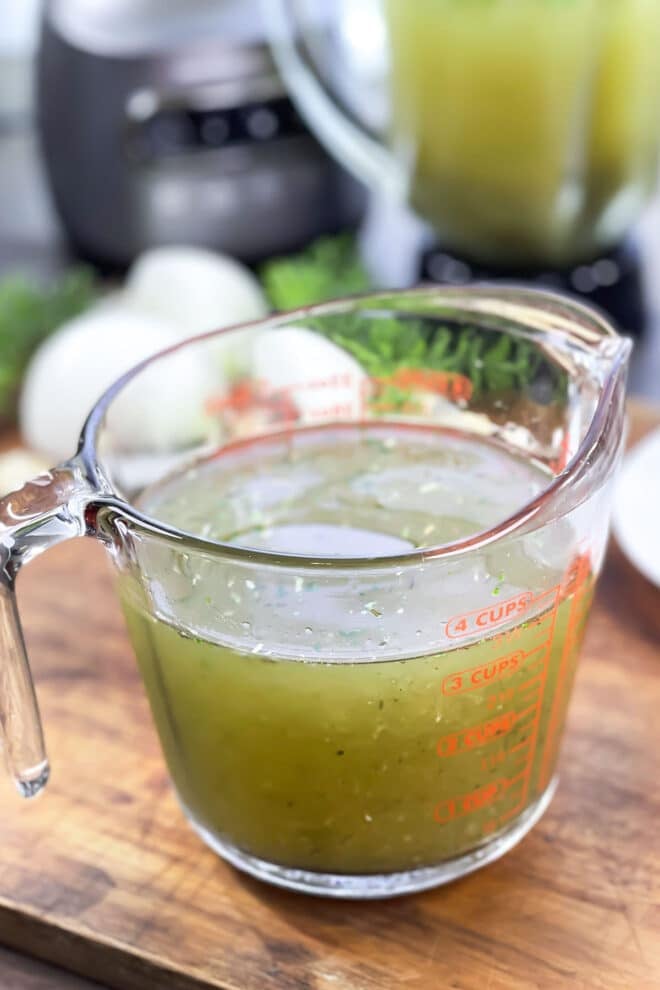
Want To Save This Recipe?
Enter your email address & I’ll send this recipe straight to your inbox to save for later! Plus, you’ll get new recipe ideas from me every week!
Because of all of that, I decided to try to find a simpler way to do it. You probably know that I’ve been obsessed with perfecting brining for awhile now. I came up with my basic brine recipe and method years ago, and then more recently I spent a lot of time experimenting with brining chicken breasts to get the optimum salt concentration and timing figured out so that it’s possible to brine even on weeknights. I’ve also figured out the perfect pork chop brine.
The recipe I’m sharing with you today for the most delicious and easiest turkey brine comes from that same goal: How do we brine turkey in a way that truly adds flavor while not being inconvenient?
What I’ve figured out to do is to skip all of that boiling. Instead, we’ll be making a flavor-bomb slurry in the food processor with water, salt, raw onion, raw garlic, and a ton of fresh herbs. That all gets pulverized into the water, making an extra-concentrated flavored water that is going to get sucked into the turkey during the brining process. It’s so much easier than boiling. And, you know what, it results in much more delicious and flavorful turkey meat too. I’ll tell you all about that lower down. First, what is a brine and why should you use one?
Video: How To Make The Best Turkey Brine
What Is A Brine?
At it’s most basic, a brine is a salt water solution used to add moisture. As you’ll see in this recipe, there can be additional ingredients to add flavor. The meat being brined absorbs that liquid, making it juicy and flavorful.
Why Should I Brine My Thanksgiving Turkey?
Brining a whole turkey before roasting can infuse every part of the bird with salt and moisture, including the breast (which can otherwise end up dry and flavorless), producing a well-seasoned and moist turkey.
Most brine recipes, however, require boiling large amounts of water with aromatics to release flavor compounds and dissolve the salt, and then cooling it completely, which can add several hours to the process of roasting a turkey.
My easy turkey brine recipe bypasses all of that and delivers even more flavor without having to boil and cool anything.
How Long To Brine A Whole Turkey
Other brine recipes also recommend that the turkey be brined for 8, 12, or 24 hours. My brine recipe cuts that time to just four hours with my higher concentration of salt, so you can brine and roast on the same day. This not only saves many hours, but it also frees up space in the refrigerator.
Before you get started on the brine, be sure that the type of turkey you purchase isn’t already brined. Avoid anything labeled “kosher,” “enhanced,” or “self-basting,” which has typically been injected with a salt solution before being packaged. Brining an already-brined turkey will result in a too-salty, over-seasoned bird.
Why Is This The Best Turkey Brine?
There are a few techniques I’ve combined that quickly infuse flavor and moisture into the turkey without having to boil and cool the brine.
- Creating a flavor-bomb slurry in the food processor
- Using a higher salt to liquid ratio for shorter brine time
- Brining tall instead of wide, with the head first
How To Make Your Turkey Brine Slurry
The flavor-bomb slurry is exactly how it sounds. It’s a concentrated puree of potent aromatics, like raw onion, raw garlic, fresh and dried herbs, salt, and water. Many recipes call for apple cider or juice as well, but the acid can sometimes give the outer layer of the turkey a mushy or mealy texture, so I recommend just using water.
To make the slurry, add the onion, garlic, parsley, sage, rosemary, thyme, bay leaves, salt, and two cups of the water to the bowl of a food processor or large blender. Cover and puree until smooth.
This slurry acts as both a brine and a marinade of sorts. The salt water plumps up and seasons the meat, while the aromatics flavor the outside skin and about ⅛-inch into the meat.
If you don’t want to fuss with the fresh onions, garlic, and herbs, the same slurry method can be created using dried spices using the amounts below and following the same steps:
- ¾ cup onion powder
- ½ cup garlic powder
- ½ cup ground poultry seasoning
- 6 dried bay leaves
- 1 cup kosher salt
- 1 gallon of water, divided
Additional aromatics can also be included in the slurry, like whole peppercorns, whole juniper berries, orange zest or peel (without the pith), and fennel bulb.
Using This Brine For Smaller Quantities
If you’re not brining a turkey, but instead are brining smaller amounts of meat or poultry, here are the amounts of the ingredients that you’ll need. The method is the same as in the recipe below.
This smaller amount of brine will be perfect for 4-6 chicken breasts, 4-6 pork chops, 2 pork tenderloins, or one 3-4 pound pork loin roast. You can also make a boneless turkey breast roast with this. You need the meat/poultry to be fully submerged in the liquid. If it isn’t, transfer it all to a narrower container, or add 1 cup of water mixed with 1 tablespoon of kosher salt.
- 1 small onion, peeled, roughly chopped
- 6 cloves garlic, peeled
- 1/4 cup tightly packed parsley leaves and stems
- 8 fresh sage leaves
- 1 large sprig rosemary, stem removed
- 1 Tbsp. dried thyme leaves
- 1 dried bay leaf
- 4 Tbsp. Morton’s kosher salt*
- 4 cups cold tap water
*If using Dixie Crystals kosher salt, use 6 and 1/2 Tbsp. If using regular table salt, use 3 Tbsp.
How To Brine A Whole Turkey
It’s important to use a tall, rather than wide, container for brining the turkey, like a large stock pot or a five-gallon bucket. This allows for better displacement of the liquid around the turkey so that the brine is touching every part. Placing the turkey head first into the container is also a crucial step, ensuring the important parts of the bird, like the breast, thighs, and drumstick meat are fully submerged. If the tail or drumstick bones stick out of the brine, it’s perfectly okay.
Transfer the brine to the tall container of choice, and then lower the turkey into the brine, head first.
Once the turkey is submerged in the brine, it needs to be kept cold for four hours. If the container will fit into the refrigerator, cover the container and transfer it into the fridge, and set a timer for four hours.
If the container won’t easily fit into the refrigerator, you’ll need to add a little bit of ice to the brine to keep everything cold. Fill most of the remaining space in the container with ice, leaving about an inch or two at the top, then cover the container and keep it in a cool, dry place, away from direct sunlight.
The little bit of ice will keep everything cold enough and within the safe food handling guidelines for the turkey. And by the time the ice begins to fully melt, the four hours will be up. As the ice melts, it will just become part of the brine, and because the salt ratio is already very high, the little bit of ice won’t affect the brine concentration.
While brining does add moisture, it’s not a substitute for keeping the turkey moist if it becomes overcooked, so I recommend for something this special that a digital probe thermometer is used to monitor the temperature of the turkey while it’s cooking.
After the turkey has been in the brine for four hours, transfer the turkey to a roasting pan and pat it dry using paper towels. Then, cook the turkey according to your favorite recipe and get ready for the most flavorful turkey you’ve ever had.
Making Gravy From Brined Turkey Drippings
Sometimes the pan drippings from a brined turkey can be too salty. The best thing to do is to have some store-bought or homemade unsalted chicken stock on hand just in case your drippings aren’t usable.
If your drippings taste fine to you, then you can make gravy the usual way. However, if your drippings are too salty, you can make this gravy without drippings recipe using the unsalted chicken stock. Since the chicken stock isn’t salted, you can add some of your salty turkey drippings to your gravy as seasoning. Just note that if you’re going to be simmering your gravy for awhile, the salt will concentrate and you may need to add water to get it back to the original flavor.
Easier Turkey Brine Options: Dry Brining and Turkey Pieces
If dealing with a liquid brine and large containers seems too overwhelming to you, there’s other options. You could dry brine your whole turkey which still adds salt and seasoning to your meat without submerging it in water. It takes longer, but can sit in the fridge and doesn’t require a big container.
I’ll also soon be sharing my method for brining turkey pieces. This is great because they are easier to handle, plus you can buy exactly the amounts and pieces you need for your family.
Podcast Episode About This Turkey Brine Recipe
Listen to me explain briefly about how to make this brine, with some great tips along the way, by clicking the play button below:
Get more recipe podcast episodes like this one here on my podcast, Recipe of the Day.
Print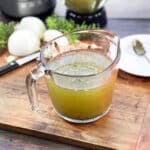
The BEST Turkey Brine Recipe
- Prep Time: 15 minutes
- Cook Time: 0 minutes
- Total Time: 15 minutes
- Yield: 1 gallon 1x
- Category: Brine
- Method: Mix
- Cuisine: American
DESCRIPTION
Use this brine with a thawed 10-12 lb. whole turkey. Avoid purchasing a turkey labeled “kosher,” “enhanced,” or “self-basting,” which are typically already brined before packaging. Brine the whole turkey for at least 4 hours but as long as 12 hours, keeping the turkey cold at all times.
Ingredients
- 2 large onions, peeled, roughly chopped
- 2 large heads garlic, cloves smashed, peeled
- 1 cup tightly packed parsley leaves and stems (about 1 oz.)
- 1/2 cup tightly packed sage leaves (about 1.5 oz.)
- 1/2 cup fresh rosemary leaves (about 1 oz.)
- 1/4 cup dried thyme
- 6 dried bay leaves
- 1 cup kosher salt
- 16 cups of water, divided
Instructions
- In the bowl of a food processor or blender pitcher add onion, garlic, parsley, sage, rosemary, thyme, bay leaves, salt, and 2 cups of the water.
- Cover and blend on high until smooth. Transfer mixture to a 5-gallon container. Add remaining water, stir to combine.
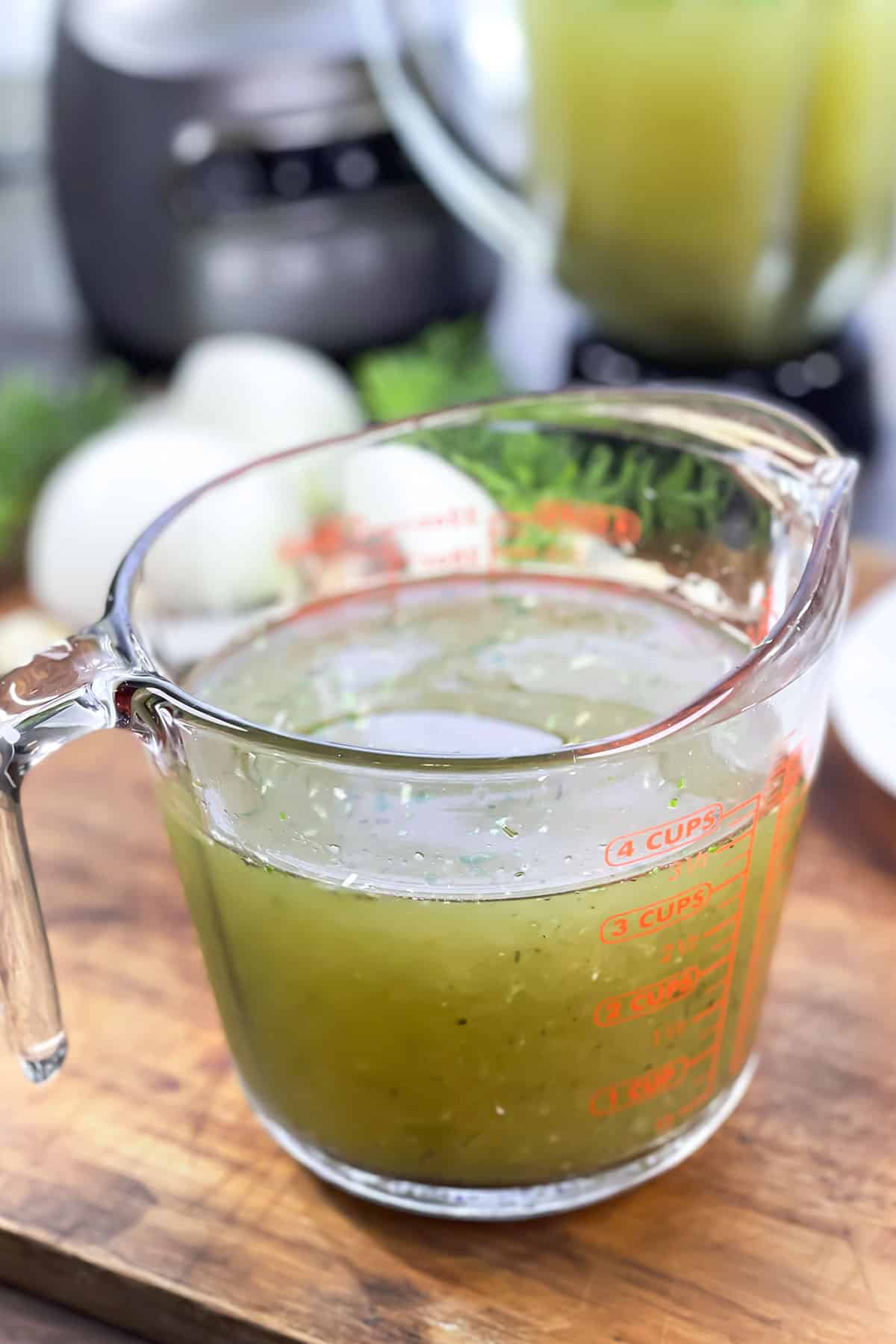

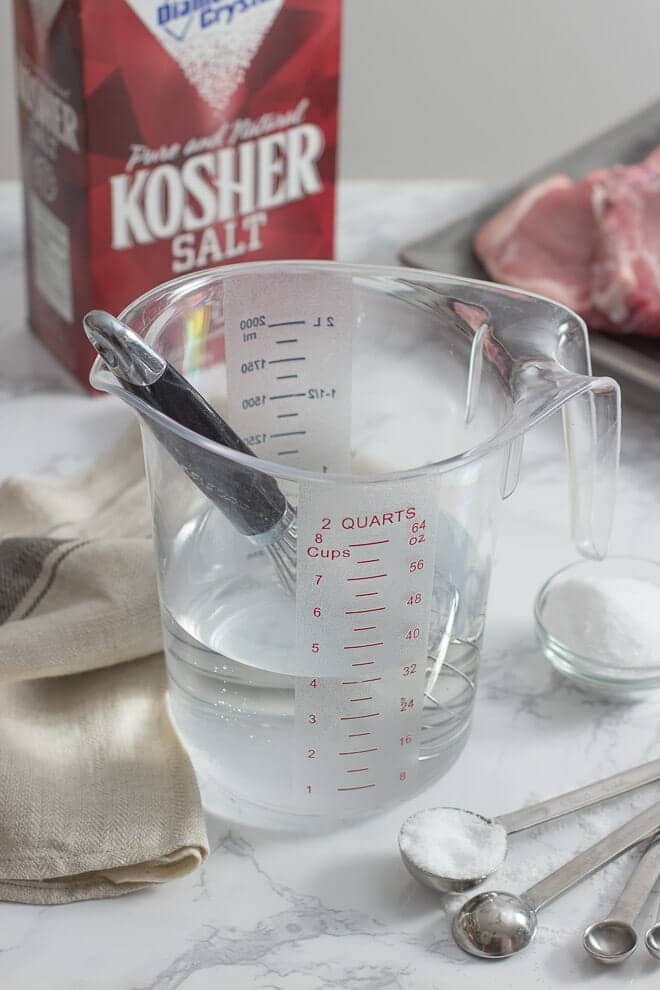
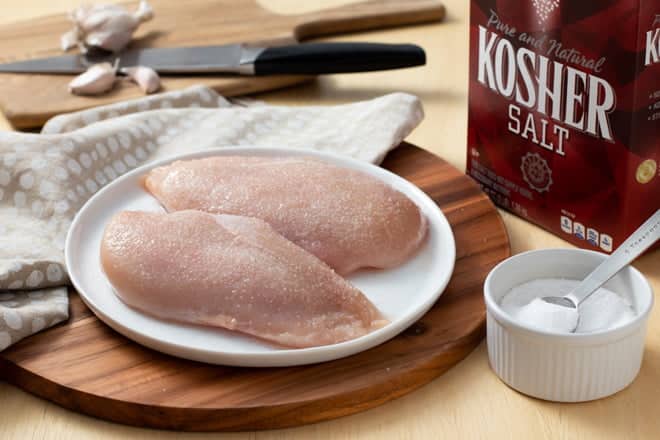
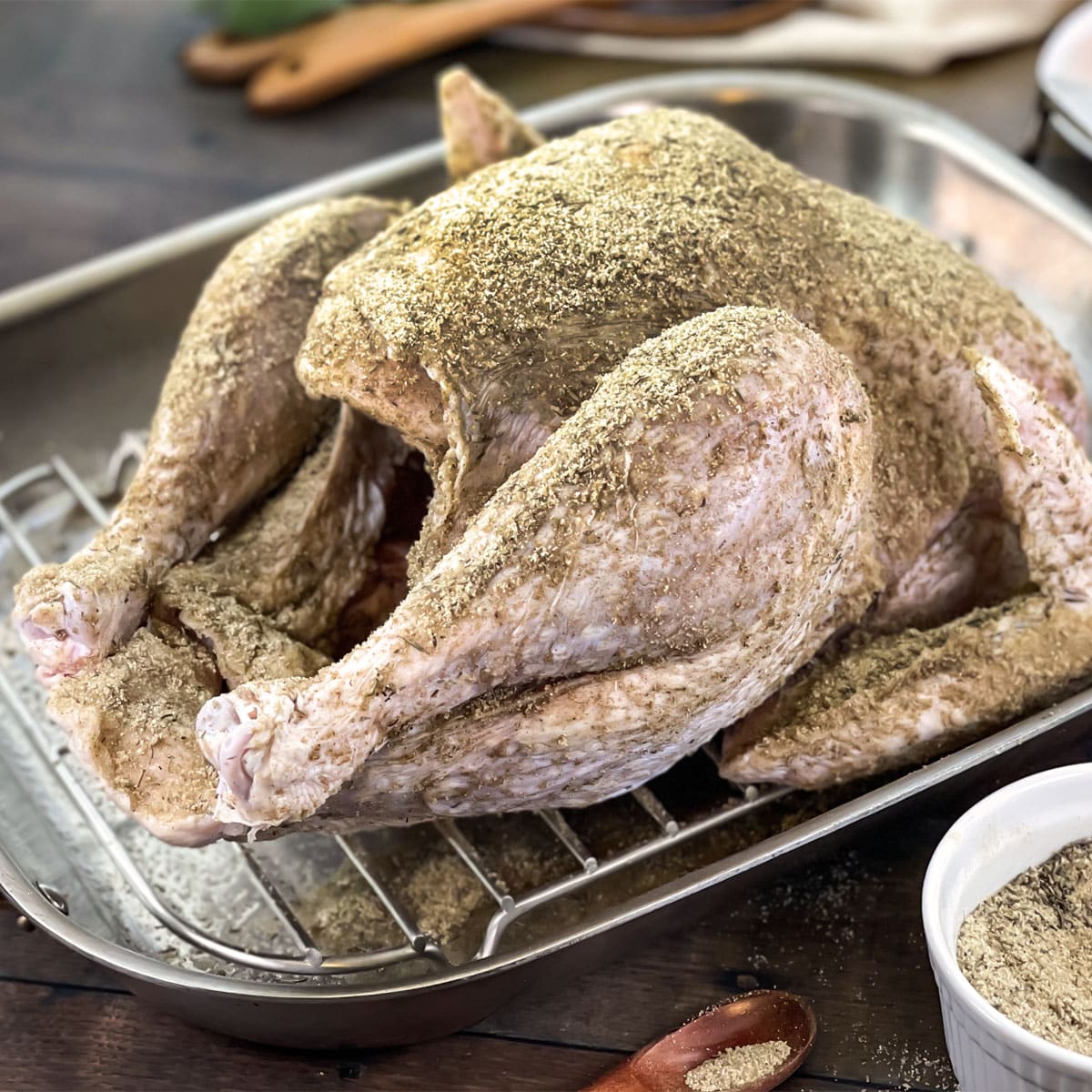
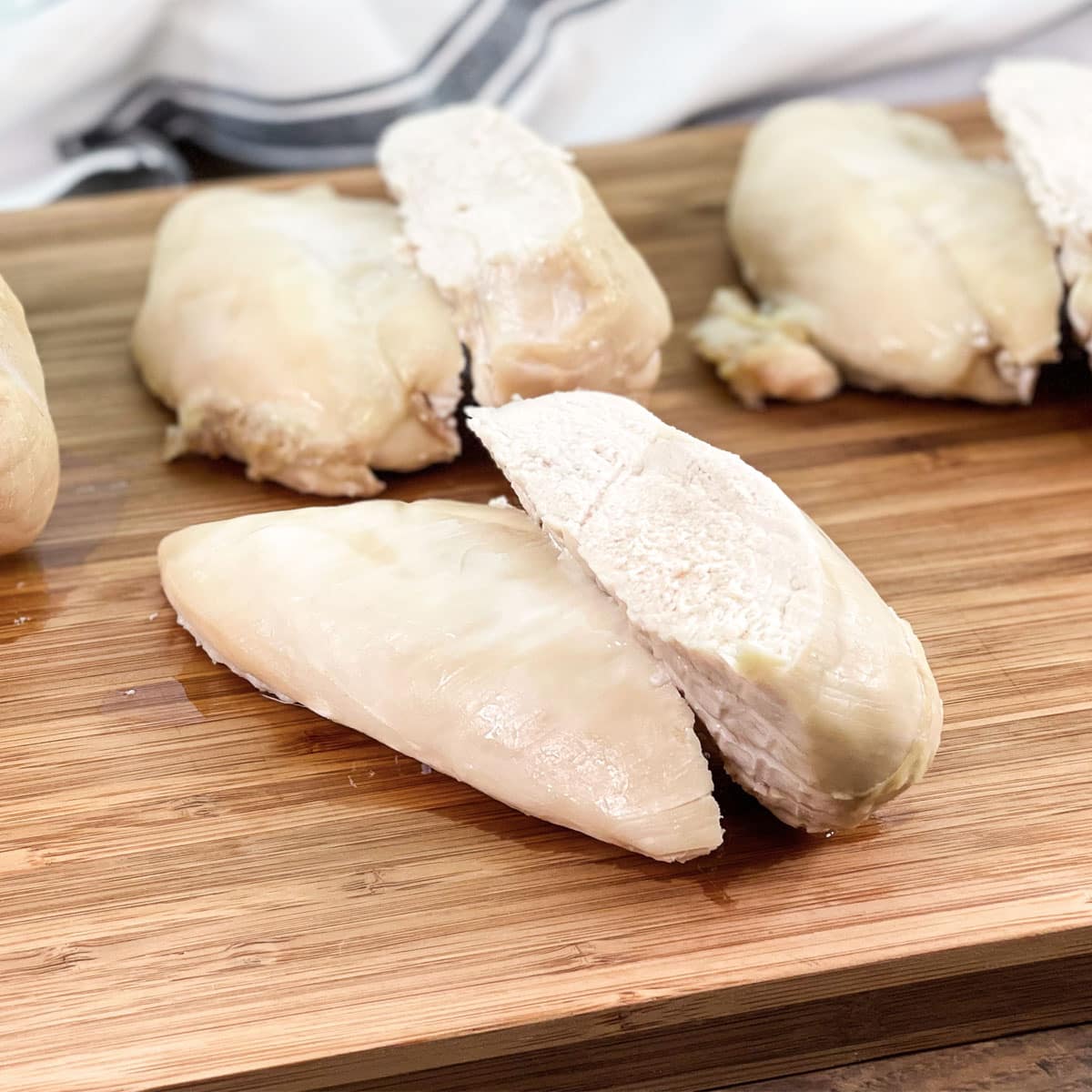



















IF I AM USING THIS BRINE FOR SMALLER QUANTITIES, SUCH AS 4-6 BONELESS SKINLESS CHICKEN BREAST HOW LONG SHOULD I BRINE THEM?
I think brining chicken breasts for an hour works great, Kimberly! Anywhere from 30 minutes to 2 hours works, depending on the size of them, but 1 hour seems to be the sweet spot for me.
Wow! Just Wow! We celebrated Thanksgiving early this year and I brined a whole turkey plus extra drumsticks using this recipe. It was the best turkey any of us have ever had. Everyone just kept saying that! It was amazing. I’m so happy I found your site and I can’t wait to try more of your recipes.
Janet, I am so happy you all liked it! Thank you so much for coming back to let me know. And welcome to the site! I can’t wait to hear what else you make <3
This really is the best turkey brine. I’m so happy I tried it, and I’m happy that I thought to bookmark it because I’m making it for Thanksgiving again this week!
Brooklyn, I’m delighted that you like it so much. Thanks for letting me know!
Can you leave the turkey in the bribe overnight?
Pam, I only recommend this brine for maximum 8 hours on a turkey. It has a high concentration of salt. What you can do is to brine it overnight, and then take it out of the brine, pat it dry, and keep it in the fridge until you’re getting it ready to cook it.
This was the best turkey I ever made. The brine flavor really went right into the meat and it tasted so good. The meat was tender and juicy like it normally is when I brine it, but way more flavorful. I’ll be using it again!
Trish, I’m so happy to hear that! Thanks for letting me know.
Hey have you ever. brined a chicken with this recipe? Would you recommend any recipe adjustments? I like roast chicken for Thanksgiving instead of Turkey, but want typical Thanksgiving flavors. Thanks for any advice you can provide.
Sarah, yes, I’ve tried it and it turns out really amazing! I’m planning to post the recipe for it on the site soon. Until then, for a whole chicken, brine it in the mixture for 1.5-2 hours and then cook it as you usually would.
What a brilliant idea! I saw it and knew I had to try it. I’m not doing a turkey until thanksgiving but I did this for some chicken breats and it was amazing how much flavor came though.